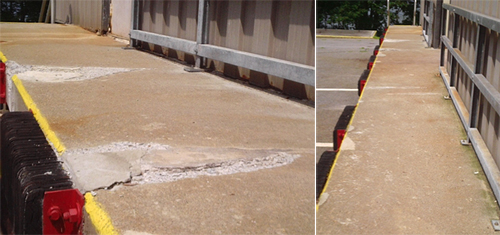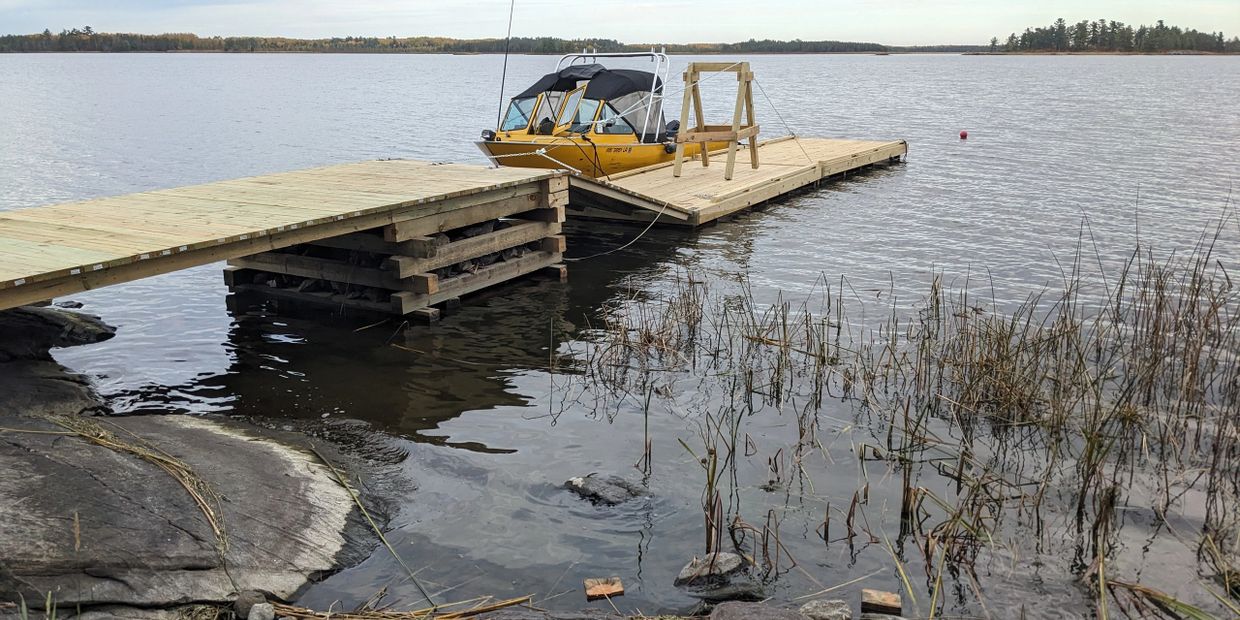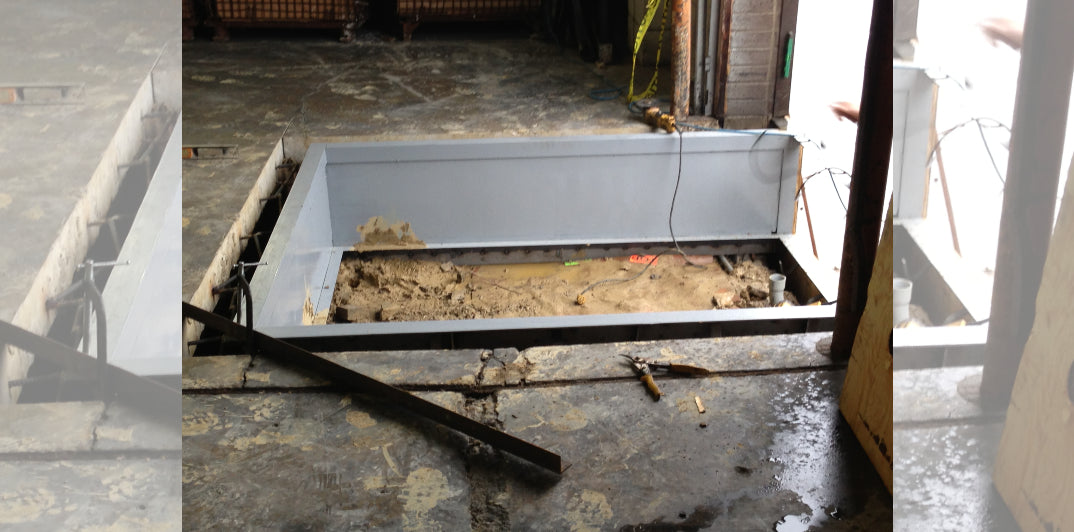Efficient Dock Repair Service Techniques: Making Sure Architectural Integrity
Making certain the architectural integrity of docks via effective repair strategies is paramount for the long life and safety of aquatic centers. Consequently, picking the ideal repair service materials, such as composite materials and corrosion-resistant alloys, is vital for sturdiness.
Assessing Dock Damages
Evaluating dock damage is an essential primary step in ensuring the architectural integrity and security of any kind of docking facility. This preliminary examination involves a comprehensive evaluation to recognize both hidden and noticeable damages. Key facets to take a look at include the dock's structure, pilings, outdoor decking, and hardware. Each component has to be scrutinized for indicators of wear, rot, deterioration, or various other kinds of degradation that could jeopardize the structural integrity.
Architectural engineers or qualified examiners generally do these analyses making use of specialized techniques and tools. As an example, underwater assessments may use sonar tools or from another location ran vehicles (ROVs) to find submerged damages. Over water, visual examinations are matched by making use of dampness meters and other diagnostic devices to discover underlying issues not immediately visible to the naked eye.

Picking Repair Materials
Choosing the ideal fixing products is a critical action in the dock remediation process, one that directly affects the durability and performance of the repaired framework. Product choice have to be driven by variables such as environmental problems, load-bearing demands, and compatibility with existing dock parts. Timber is a traditional option for docks due to its all-natural durability and visual charm. Nevertheless, selecting the appropriate kind of wood, such as pressure-treated lumber or naturally rot-resistant types like cedar or teak, is essential to endure aquatic settings.
In enhancement to timber, composite products are significantly popular because of their sturdiness and reduced upkeep needs. Composites, usually made from a mix of plastic and wood fibers, supply outstanding resistance to rot, bugs, and UV damages. For steel docks, choosing corrosion-resistant alloys such as galvanized steel or marine-grade light weight aluminum is important to prevent corrosion and guarantee structural integrity in saline water conditions.
Epoxy materials and marine-grade sealers are crucial for repairing splits and securing joints, supplying a waterproof obstacle and improving the dock's total strength. By carefully choosing top quality materials, dock repairs can achieve lasting results, thereby safeguarding against future deterioration and guaranteeing secure, reputable use.
Architectural Support Methods
Efficient structural reinforcement methods are vital in making sure the security and durability of dock repairs. One essential technique entails using steel or composite support bars (rebar) within concrete frameworks. Rebar supplies extra tensile strength, stopping cracks and dispersing loads more evenly. This approach is specifically reliable for docks exposed to heavy tons or severe ecological problems.
An additional important method is the application of fiber-reinforced polymers (FRP) These materials provide high strength-to-weight ratios and outstanding resistance to rust, making them ideal for reinforcing wood or concrete docks. FRP can be applied in sheets or strips and bonded with internet epoxy materials to improve architectural stability.
Supporting and anchoring systems likewise play a crucial duty in structural reinforcement. Cross-bracing, utilizing steel or wooden beams, can combat side forces, minimizing swaying and activity. Securing systems, such as helical piers or driven stacks, offer a stable foundation by transferring loads to much deeper, more secure soil layers.
Lastly, the combination of load-distribution plates can aid distribute weight a lot more evenly across the dock's surface area, alleviating localized tension points. These techniques jointly ensure that anchors remain durable and secure, capable of standing up to the roughness of their functional environment.
Advanced Repair Methods

Another sophisticated technique involves underwater welding, which permits repairs to be performed without the demand to dewater the area. This approach is specifically useful for dealing with structural concerns in immersed dock parts, guaranteeing minimal disruption to operations. Enhanced welding strategies, coupled with robot systems, provide precision and reliability, company website thereby expanding the lifespan of the find out dock.
In addition, cathodic defense systems are carried out to avoid deterioration in metallic dock frameworks. By utilizing sacrificial anodes or amazed present systems, these techniques properly alleviate the electrochemical processes that cause product damage.
Finally, progressed surveillance technologies, such as structural wellness surveillance (SHM) systems, provide real-time information on the problem of dock structures. These systems enable positive maintenance and prompt treatments, ultimately ensuring the lasting architectural stability of the dock.
Upkeep and Avoidance
Maintenance and prevention are basic ideas that underpin the longevity and security of dock frameworks. Regular inspections are vital, enabling very early detection of wear and tear, prospective weak points, and environmental influences. A proactive approach, including regular checks for corrosion, rot, and architectural changes, alleviates pricey repair work and extends the dock's functional life.
Safety nets should include applying protective layers to steel parts to defend against rust and utilizing cured wood to stand up to decay. In addition, guaranteeing appropriate drainage and air flow can prevent water build-up, which is a common reason for architectural degradation. Including quality products and sticking to producer guidelines during building and construction and repair phases likewise play important duties in enhancing toughness.

Educating employees in dock upkeep finest techniques guarantees consistent application of safety nets. Leveraging technical breakthroughs, such as drones for examinations and sensors for real-time monitoring, can better improve upkeep initiatives. By prioritizing upkeep and prevention, dock proprietors can make sure architectural stability, functional security, and cost-effective monitoring over the dock's life expectancy.
Final Thought
Finally, maintaining the architectural integrity of marine centers demands thorough dock repair methods. Comprehensive assessments using sophisticated tools reveal both visible and hid problems, while the selection of appropriate repair materials enhances sturdiness. Carrying out architectural support methods addresses anxiety points properly. Advanced fixing strategies, combined with normal maintenance methods, make sure the dock remains functional and risk-free under diverse environmental problems. Embracing these strategies substantially extends the lifespan and capability of marine facilities.
Guaranteeing the architectural integrity of anchors via effective repair service techniques is critical for the durability and safety of marine facilities.Choosing the suitable repair work products is a pivotal action in the dock restoration process, one that straight affects the long life and efficiency of the repaired framework.Effective architectural reinforcement techniques are critical in making sure the security and longevity of dock repairs. By focusing on upkeep and avoidance, dock owners can make certain architectural honesty, functional security, and cost-efficient management over the dock's lifespan.
In conclusion, maintaining the architectural stability of aquatic centers demands extensive dock repair work strategies.